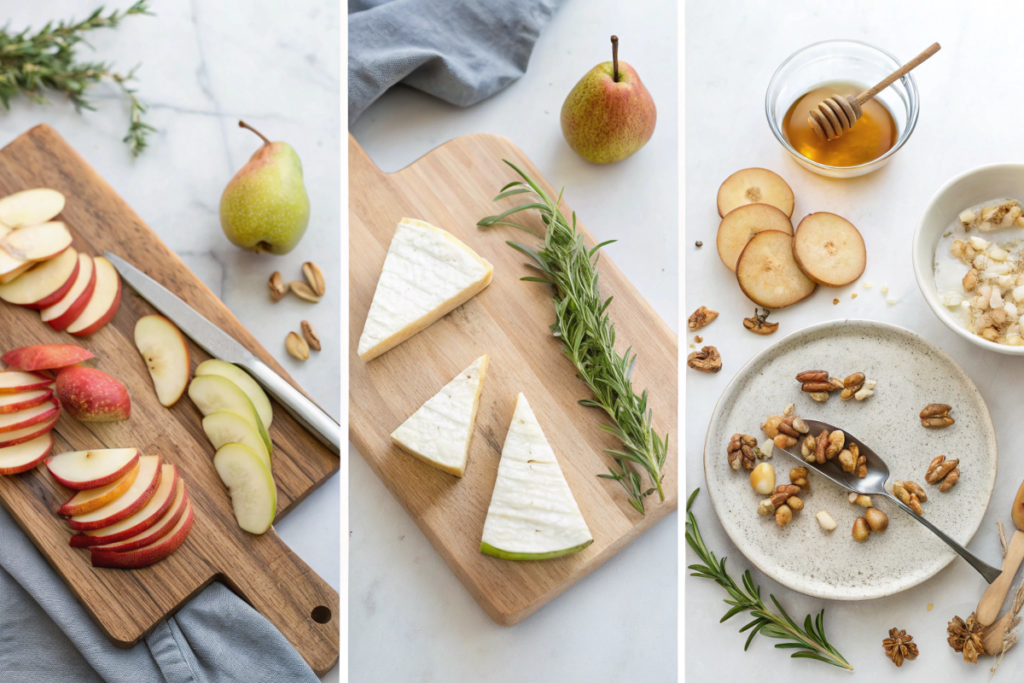Not everyone enjoys the typical sweetness of cakes, cookies, and pies. However, that doesn’t mean dessert is off the table. If you prefer subtle flavors, mild sweetness, or a savory twist, there are many options to enjoy. What desserts are good for people who don’t like desserts? There are plenty of creative choices that showcase fresh fruits, rich textures, and unique ingredients. For more ideas on simple desserts that aren’t overly sweet, check out this guide on the simplest dessert.
In this post, we’ll explore desserts for those who avoid sweets. We will cover fruit-based dishes, savory-sweet treats, and international favorites. Additionally, we’ll look at texture-focused options. As you’ll see, there is a dessert for everyone. Moreover, we’ll discuss how to balance flavors and add healthy ingredients. This way, you can create desserts that satisfy without too much sweetness.
Understanding Dessert Preferences
Why Some People Don’t Enjoy Traditional Desserts
Not everyone has a sweet tooth, and there are several reasons why some people don’t enjoy traditional desserts. For example, overly sweet flavors can be overwhelming or cloying. On the other hand, others may prefer savory foods or have taste sensitivities that make sugary treats less appealing. In addition, personal experiences, cultural influences, and dietary habits play a role in shaping dessert preferences. As a result, people who enjoy lighter, more balanced flavors often seek alternatives to typical cakes, cookies, and candies.
How Flavor Profiles Influence Dessert Choices
Flavor profiles greatly affect whether someone enjoys a dessert. While traditional desserts emphasize sweetness, other profiles like savory, salty, bitter, and tangy can appeal to those who dislike overly sweet treats. For instance, desserts that incorporate cheese, nuts, herbs, or spices offer complexity and balance. Moreover, texture also plays a role in dessert preferences. Some people prefer crunchy, creamy
Desserts with Low Sweetness Levels
Fruit-Based Desserts
Fresh Fruit Platters with a Twist
Fresh fruit platters are a simple and refreshing dessert option for those who prefer less sweetness. To enhance the experience, add a twist with ingredients like fresh herbs (mint or basil), a sprinkle of sea salt, a drizzle of honey, or a squeeze of lime juice. Additionally, you can serve fruits like melons, berries, and citrus slices alongside a yogurt or cream dip for added flavor and variety.
Baked Fruits with Herbs and Spices
Baking fruits like apples, pears, or peaches enhances their natural sweetness without the need for added sugar. For an unexpected twist, season the fruits with cinnamon, nutmeg, or fresh herbs like rosemary or thyme. Consequently, the combination of warmth, subtle spices, and soft texture creates a comforting dessert that’s not overly sweet. To complete the dish, serve baked fruits on their own or pair them with a dollop of Greek yogurt or a sprinkle of nuts.
Savory-Sweet Desserts
Cheese-Based Desserts
Cheese-based desserts offer a savory edge that balances mild sweetness. For example, options like baked brie with figs, mascarpone with a touch of honey, or ricotta with berries are simple yet satisfying. In this way, these desserts combine creamy, rich cheese with just a hint of sweetness, making them perfect for those who prefer more complex flavors.
Nut and Seed Desserts
Nut and seed-based desserts provide a crunchy texture and a natural, earthy sweetness. Specifically, treats like nut brittle, seed bars, or roasted nuts with a touch of honey and sea salt are excellent choices. Furthermore, they are flavorful, satisfying, and not overly sugary. Thus, the combination of savory notes, crunch, and natural sweetness makes these desserts a delightful option for those who enjoy subtle flavors.
In summary, these low-sweetness desserts offer balance and variety, providing satisfying options that go beyond traditional sugary treats.
Texture-Focused Desserts for Minimal Sweetness
Crunchy and Crispy Desserts
Biscotti and Crackers
Biscotti and crackers are excellent choices for those who prefer crunch over sweetness. When considering what desserts are good for people who don’t like desserts, biscotti, Italian twice-baked cookies, are typically less sweet and often feature flavors like almond, anise, or citrus zest. Additionally, they pair wonderfully with coffee or tea. In the same way, savory crackers with herbs, seeds, or a hint of cheese provide a satisfying crunch without overwhelming sweetness. As a result, they make for a unique and enjoyable dessert option.
Nut Brittle and Seed Bars
Nut brittle and seed bars combine crunch and subtle sweetness for a satisfying treat. Specifically, nut brittle blends roasted nuts like almonds, peanuts, or pecans with a caramelized sugar coating, offering a balance of sweet and savory flavors. Likewise, seed bars, made with sesame seeds, sunflower seeds, and honey, provide a crunchy, nutrient-dense alternative. Therefore, these options are great for those who appreciate texture and a more complex flavor profile.
Creamy, Subtle Desserts
Panna Cotta and Custards
Panna cotta and custards are creamy desserts that offer subtle sweetness and smooth textures. For example, panna cotta, an Italian dessert made from cream, sugar, and gelatin, can be flavored with vanilla, coffee, or herbs like rosemary. Similarly, custards have a delicate flavor and can be paired with fruit, caramel, or a hint of spice. Consequently, these desserts are satisfying without being overly sugary, perfect for those who love creamy textures.
Yogurt-Based Parfaits
Yogurt-based parfaits are a versatile and healthy dessert option. To create balance, layer plain or Greek yogurt with fresh fruit, nuts, and a drizzle of honey. In this way, the tangy yogurt contrasts with the natural sweetness of the fruit, while the nuts add a satisfying crunch. Moreover, parfaits are customizable and can be adjusted to suit individual preferences. Thus, they are ideal for those who enjoy lighter, less-sweet desserts.
In conclusion, these texture-focused desserts emphasize crunch and creaminess, providing delicious options for those who prefer minimal sweetness in their treats.
International Desserts with Mild Sweetness
Japanese Desserts
Mochi and Daifuku
Japanese desserts are known for their subtle sweetness and delicate flavors. For example, mochi is a chewy rice cake made from glutinous rice, offering a satisfying texture without being overly sugary. Additionally, it can be enjoyed plain or filled with ingredients like sweetened red bean paste or matcha-flavored cream. Similarly, daifuku is a type of mochi filled with various fillings such as red bean paste, strawberries, or even ice cream. As a result, these desserts emphasize balance and texture, making them perfect for those who prefer mild sweetness.
Italian Desserts
Tiramisu and Semifreddo
Italian desserts often strike a perfect balance between rich flavors and moderate sweetness. For instance, tiramisu combines layers of espresso-soaked ladyfingers, mascarpone cream, and a dusting of cocoa powder. Consequently, its mildly sweet, coffee-infused flavor makes it a favorite for those who enjoy complexity rather than intense sweetness. Likewise, semifreddo, a semi-frozen dessert, blends whipped cream, eggs, and flavorings like vanilla or nuts. Because of this, its light, airy texture and subtle sweetness make it a refreshing and elegant treat.
In summary, these international desserts offer a variety of flavors and textures. Thus, they cater to those who prefer less sugary options while still enjoying a satisfying end to a meal.
Quick and Easy Desserts for Non-Sweet Lovers
No-Bake Options
Cheese and Fruit Boards
Cheese and fruit boards are an effortless and elegant dessert option for those who prefer subtle flavors. To create variety, combine cheeses like brie, cheddar, or gouda with fresh fruits such as grapes, apple slices, or figs. Additionally, you can add extras like nuts, olives, and a drizzle of honey for balance. As a result, the combination of creamy, salty, and mildly sweet elements creates a sophisticated dessert. Best of all, this option requires no baking and suits a variety of tastes.
3-Ingredient Desserts
Chocolate-Covered Nuts and Fruits
Chocolate-covered nuts and fruits are simple, satisfying treats that blend natural flavors with a hint of indulgence. For instance, you can use almonds, cashews, or walnuts, or fruits like strawberries, bananas, or dried apricots. To prepare, melt dark chocolate, dip the nuts or fruit, and allow them to cool until set. Consequently, the bitterness of dark chocolate balances the natural sweetness, creating a treat that is rich but not overly sweet. In addition, these desserts are perfect for quick preparation and easy enjoyment.
In conclusion, these quick and easy desserts are ideal for those who want minimal effort and subtle sweetness. Thus, you can still enjoy a delicious and satisfying treat without an overload of sugar.

Healthy Alternatives to Traditional Desserts
Low-Sugar and Natural Sweetener Desserts
Date and Nut Energy Balls
Date and nut energy balls are nutritious, naturally sweetened treats that are easy to make. To prepare them, blend dates, almonds, walnuts, and a dash of cinnamon in a food processor. Next, roll the mixture into bite-sized balls and chill until firm. As a result, the dates provide natural sweetness, while the nuts add protein and healthy fats. Because of this, these energy balls are perfect for a quick snack or a guilt-free dessert option.
Dark Chocolate Delights
Dark chocolate is a healthier alternative to milk chocolate due to its lower sugar content and high antioxidant levels. For the best results, opt for chocolate with 70% cocoa or higher. Additionally, you can enjoy dark chocolate on its own or pair it with fruits, nuts, or a sprinkle of sea salt for added flavor. Consequently, the slight bitterness of dark chocolate satisfies cravings without overwhelming sweetness.
Desserts Rich in Healthy Fats
Avocado-Based Mousse
Avocado-based mousse is a creamy and nutritious dessert that combines healthy fats with subtle sweetness. To make this treat, blend ripe avocados, cocoa powder, a splash of vanilla extract, and a natural sweetener like honey or maple syrup until smooth. In this way, the avocado provides a rich, velvety texture, while the cocoa adds a chocolatey flavor. Furthermore, this mousse is not only delicious but also packed with nutrients, making it a satisfying and healthy treat.
In summary, these healthy alternatives to traditional desserts are perfect for those who want to enjoy a sweet treat while maintaining a balanced diet. Ultimately, they offer natural ingredients, lower sugar content, and beneficial nutrients without sacrificing flavor or satisfaction.
Tips for Making Desserts for Non-Dessert Lovers
Balancing Flavors: Sweet, Salty, and Bitter
What desserts are good for people who don’t like desserts? Creating desserts for non-dessert lovers often involves balancing different flavors. Rather than relying solely on sweetness, incorporate elements of saltiness and bitterness. For example, add a sprinkle of sea salt to dark chocolate desserts or a dash of espresso to tone down sweetness. Additionally, ingredients like nuts, cheese, and herbs can introduce complex flavors. As a result, these elements make desserts more appealing to those who prefer subtle and layered tastes.
Using Natural Ingredients for Subtle Sweetness
To avoid excessive sugar, use natural ingredients to achieve a mild sweetness. For instance, fresh fruits, dates, honey, and maple syrup offer gentle sweetness without overwhelming the palate. Furthermore, ingredients like coconut, cinnamon, and vanilla extract can enhance flavors without adding too much sugar. Consequently, these options provide a more natural taste that appeals to those who prefer desserts that are not cloyingly sweet.
Creative Plating for a More Enjoyable Experience
Presentation can make a big difference in how a dessert is enjoyed. In fact, for non-dessert lovers, visually appealing plating can create excitement and intrigue. To achieve this, use elements like colorful fruits, edible flowers, or artistic drizzles of sauce to elevate simple desserts. Moreover, serving smaller portions or arranging desserts in unique ways—such as on a cheese board or in elegant glassware—can make the experience feel more sophisticated and enjoyable.
In summary, by balancing flavors, using natural sweeteners, and presenting desserts creatively, you can create treats that are satisfying and enjoyable. Thus, even those who don’t typically love sweets can find something to appreciate.

FAQs About Treats For Non-Dessert Lovers
How Can I Make Desserts That Aren’t Overly Sugary?
Use natural sweeteners like honey, maple syrup, or dates, and balance flavors with salty or bitter elements like sea salt, dark chocolate, or espresso.
What Ingredients Can I Use to Create Savory-Sweet Desserts?
Incorporate ingredients like cheeses (brie, ricotta), nuts, seeds, herbs (rosemary, thyme), and spices to add complexity and reduce sweetness.
What Are Some International Desserts That Aren’t Very Sweet?
Try Japanese mochi, Italian tiramisu, French cheese platters, or Middle Eastern baklava. These desserts balance flavors and offer mild sweetness.
Conclusion
In conclusion, there are plenty of dessert options for those who don’t typically enjoy traditional sweets. What desserts are good for people who don’t like desserts? By focusing on low-sweetness levels, balancing flavors, and exploring unique textures, you can find treats that satisfy without overwhelming the palate.
For instance, whether it’s a fruit-based platter, a cheese and nut board, or an international delicacy like mochi or tiramisu, these alternatives offer variety and subtle indulgence. If you’re wondering what desserts are good for people who don’t like desserts, the answer lies in these creative and satisfying options.
Furthermore, incorporating natural ingredients, savory elements, and imaginative presentations can transform dessert into an enjoyable experience for everyone. Ultimately, the best dessert is one that suits your personal taste and leaves you feeling satisfied.

